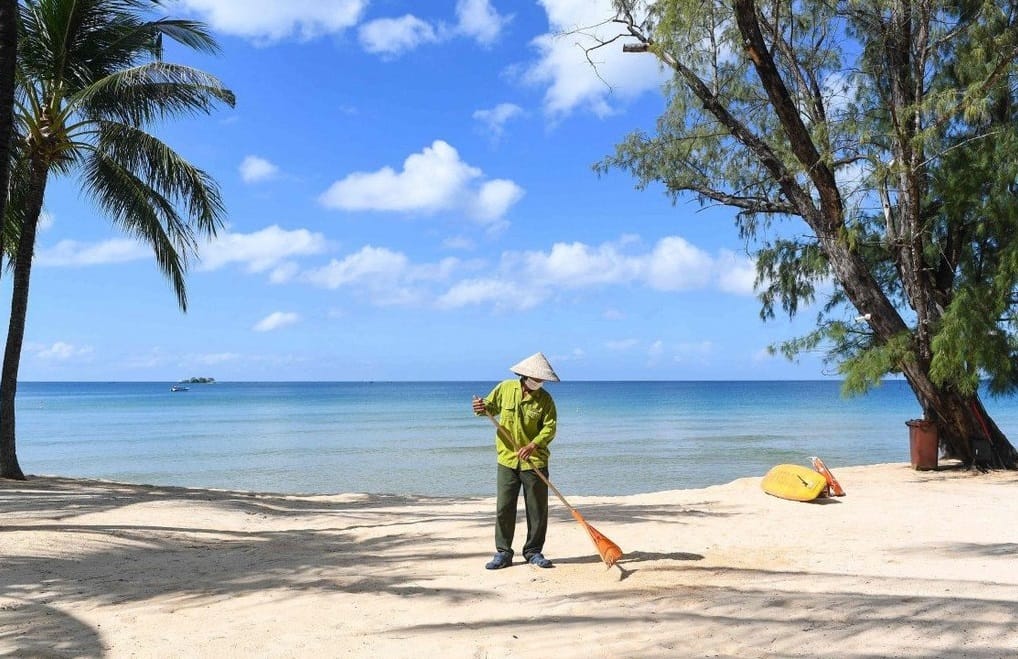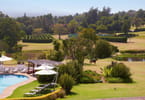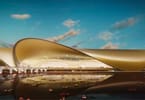Set like a sparkling emerald in an aquamarine quilt, Madeira nestles in the Atlantic Ocean 620 miles southwest of the European continent, about one-and-a-half hour’s flight time from Lisbon. Administrated by Portugal but enjoying autonomous political status, the Madeira archipelago also comprises Porto Santo and the uninhabited Desertas islands.
Celebrated for its dramatic volcanic landscape, an abundance of sub-tropical flora and the world-famous Madeira wine, the island is a favorite year-round vacation destination.
Madeira’s appeal is multi-faceted: the sedate and genteel pace of life suits the elderly and those seeking a bit of peace and quiet; it’s popular with families – Portugal is a very family-based society and kids are doted upon, and for the outdoors type, the archipelago’s dynamic and untamed landscape tests even the most accomplished and seasoned adventurer.
Furthermore, things are happening in Madeira.
The narrow Rua de Santa Maria is one of the oldest streets in Funchal, the island’s capital. Dating from the 1400s, the ancient thoroughfare arrows east from the city center into the heart of the Zona Velha (Old Town).
Several well-established restaurants thrive along this cobbled byway, and on nearby Rua Dom Carlos I. But when the improbably named Tasca Literária Dona Joana-Rabo-de-Peixe opened for business last year, the new eatery became synonymous with an exciting and refreshingly original contemporary art project – Art e Portas Abertas (Art Of Open Doors).
The movement was centered on this funky tapas bar, named after a book by 76-year-old Portuguese artist, writer, and politician, João Carlos Abreu, who grew up in Rua de Santa Maria.
Local and international artists were invited to paint the doors of shops, houses, and garages in the Old Town, many of them abandoned, using their skills and imagination to turn Funchal’s poorest and most neglected neighborhood into an open-air contemporary art space.
Symbolically, Tasca Literária was the first to receive a new lick of paint, its heavy double portal illustrated by Marcos Milewski who created an image of a bookcase stacked with colorful novels in deference to Abreu, who remains an enthusiastic advocate of the Art Of Opens Doors initiative.
One year on, a bright, breezy bohemian atmosphere enriches this historic corner of the Madeiran capital. The paintings, eclectic in style and technique, reflect a wide range of themes, anything from offbeat caricatures of elderly residents in national costume to bold, abstract socio-political messages and even poetry.
“The project was implemented in order to renovate [and] boost the tourist potential of the area,” commented Dorita Mendonça, Tourism Promotion Director at the Madeira Tourism Board. It’s also raised awareness among locals and tourists of the rich cultural product Funchal can offer, she added.
On the other side of town, a succession of plush, modern four- and five-star hotels parade along the cliff tops that run west out of the city towards the fishing village of Câmara de Lobos. Served by the Estrada Monumental, a busy highway lined with dozens of bars, cafés, restaurants, and boutiques, this is the Lido, Funchal’s vibrant hotel zone.
The four-star Porto Mare is one of several hotels enjoying a prime oceanfront location in the Lido. The property is the centerpiece of Vila Porto Mare, an upscale resort complex that incorporates the Suite Hotel Eden Mar and The Residence. Leisure facilities at the three hotels are integrated, though each unit is different in character and design. The resort is embroidered with a sub-tropical garden comprising nearly 500 unique botanical species, including Chinese hibiscus and the wonderfully descriptive fairy fan-flower.
“Many of our guests remark upon the variety of plants and flowers we have here,” said Vila Porto Mare General Manager António Pais. The lush, verdant gardens are set around the swimming pool and provide a lush, bottle green contrast against the steely blue Atlantic Ocean.
Vila Porto Mare is operated by Porto Bay Hotels & Resorts, an award-winning Portuguese hotel group with a strong presence on the island. It also operates a property in the Algarve, on mainland Portugal, and a further three units in Brazil.
The group’s flagship property, The Cliff Bay, is one of the most emblematic hotels in Madeira, a fact reinforced by the Michelin star shining over its restaurant, Il Gallo d’Oro, currently the only accolade of its kind awarded in Madeira.
Recently refurbished in soft beige and chocolate tones with flourishes of gold that heighten the sense of warmth and intimacy, the restaurant features a new wine cellar housed behind large picture windows to showcase the extraordinary range of wines available.
Directing the kitchen is Executive Chef Benoît Sinthon. “The contemporary look has refreshed the dining experience,” he said, commenting on the redecoration, “It has strengthened the restaurant’s identity.”
Sinthon’s inventive gastronomy is as much about experimentation as it is upholding the culinary traditions of the island. The menu errs towards aromatic Portuguese and Iberian cuisine, with fish and seafood featured prominently. But Sinthon regularly thinks out of the box, and beyond borders – the mouth-watering wagyu beef remains a signature dish. “For me, cuisine is all about flavor,” he stressed, “But you must also surprise the guest.”
The group’s newest hotel, Porto Bay Serra Golf, is located at Santo da Serra, a wooded inland plateau blessed with fine views of Madeira’s rugged eastern tip.
The 22-room boutique property features a modest spa facility, indoor heated swimming pool, and the Avó Micas restaurant, which specializes in traditional Madeiran cuisine. An additional draw is the nearby Santo da Serra Golf Course, venue for the prestigious annual Madeira Islands Open golf tournament.
“This new hotel allows us to extend our product,” said Porto Bay’s Marketing Manager, Fabiola Pereira, “We can now offer a sea and mountain experience.”
Madeira’s astonishing natural assets – majestic peaks, deep ravines, the UNESCO protected laurisilva forest and an ocean teeming with an incredible variety of sealife – has placed Madeira firmly on the adventure holiday map.
Walking the famous levada footpaths remains a favorite pastime, as does scuba diving (the warm and crystalline waters of the Madeira archipelago offer some of the best diving conditions in Europe).
But radical sports like canyoning, kayaking, mountain biking, and orienteering are luring a new breed of adrenaline junkies eager to pit their wits against the very best Mother Nature can throw at them.
“The challenge is the attraction,” suggested Marta Henriques of the Madeira Promotion Bureau, a trade association that works with the Madeira Tourism Board and the Funchal Chamber of Commerce and Industry, “It’s a destination full of surprises waiting to be explored.”
Equally compelling is Madeira’s neighbor, Porto Santo. Lying 27 miles northeast of her bigger sister, the tiny island is characterized by a landscape that wouldn’t look out of place in a science fiction movie. A series of strange conical peaks scattered across the land – the result of volcanic activity 14 million years ago – rear skyward to offer some fabulous hiking trails, not to mention fantastic photo opportunities.
Bereft of any real vegetation, the terrain is wild and barren in places and features some truly remarkable basalt rock formations. This austere backdrop suited Christopher Columbus who lived briefly on the island before finding fame and fortune on the other side of the Atlantic: the great explorer’s house in Vila Baleira, the island’s capital, is now a museum.
But Porto Santo’s crown jewel is the extraordinary 6-mile beach running along the island’s southern flank. The sand, formed by sediments of coral and seashells, is said to have therapeutic qualities – you can exfoliate your feet just by taking a walk along its golden rim!
Getting to Porto Santo is easy. You can fly there, but it’s much more fun to take a ferry. The Lobo Marinho departs Funchal daily and reaches its destination just over two hours later.
The vessel is equipped with bars, self-service restaurant, and cinema. A second restaurant features a la carte dining. For a modest supplement, passengers can relax in the first-class lounge. A breakfast/snack buffet is included in the price.
Ferry operator, Porto Santo Line, has designed a number of one-day cruise programs where tickets include an island tour or a day’s play at Porto Santo golf course. A third option is the bicycle package. Passengers collect their bikes at the quayside and are free to explore on two wheels.
The road out of Vila Baleira towards Ponta da Calheta at the westernmost tip of the island is long and flat and incorporates a cycle path, the via de velocípedes. It’s an inspiring ride. The route runs parallel with the beach and even if you do end up peddling against the wind, it’s the freshest sea air you’re ever likely to breathe. Ponta da Calheta itself is an idyllic spot blessed with secluded sandy coves of shallow, turquoise water. A rocky islet, the uninhabited Ilhéu de Baixo, adds dramatic perspective.
Madeira is all about scenery. The miradouros (viewpoints) at places like Pico do Arieiro and Curral das Freiras deep in the island’s heart take in majestic vistas of spectacular grandeur. But sometimes you don’t even have to leave your hotel to admire a fabulous view.
Not for nothing is The Vine’s rooftop hangout named Sky Bar 360 degrees – drinks are served with an edifying panorama of Madeira’s capital and its mountainside suburbs. At night, the streetlamps sparkle like diamonds.
The Vine Hotel is a chic urban bolthole located in the center of Funchal. Noted for its striking interior design and sophisticated character, the award-winning property is the epitome of cool. It’s what city breaks were invented for.
The spa menu includes a “Madeira Wine Massage;” the gourmet restaurant is called Uva, which means “grape” in Portuguese – yep, wine is a big deal here. The top floor also has a stunning infinity pool where those same incredible views can be enjoyed from the water’s edge.
Perhaps the best way of placing Madeira’s tourism product into context is to unwind with a drink on the Tea Terrace at Reid’s Palace Hotel as the sun begins to set. The mood is refined and civilized but ever so slightly poignant. So this is how it all began, you catch yourself thinking.
Without doubt one of the most celebrated hotel properties in the world, Reid’s defines Madeira’s golden age as an exclusive destination for the wealthy and discerning.
The hotel opened its doors in 1891 and immediately captivated the upper echelons of high society. European royalty sought solace and sanctuary within its hallowed walls. In 1924, Irish playwright, George Bernard Shaw, famously danced the tango in the hotel’s grounds. And British politician and statesman, Winston Churchill, wrote several chapters of his war memoirs while staying at Reid’s in the early 1950s.
“The Churchill Suite is our most requested room,” confirmed Ulisses Marreiros, the hotel’s General Manager.
Framed black and white photographs of the great wartime leader and his wife, Clementine, taken during their stay, adorn the salons and corridors of building, along with other images of VIP guests – snapshots of a vintage age.
Much expanded over the years, with new wings and leisure facilities added, Reid’s Palace today is a deluxe resort in the traditional mold but endowed with luxury amenities of the highest caliber.
The hotel’s singular appeal and international status sets it apart from its neighbors, and this distinguished property remains the accommodation of choice for those seeking a romantic and historic haven.
Renowned for its discreet hospitality as much as its classical elegance, Reid’s is more accessible than you might think, and attracts a refreshingly diverse clientele. It’s also highly regarded as a family hotel, and there’s plenty to keep younger guests occupied.
Indeed, punctuating the hushed conversation floating over the terrace is the echo of children’s laughter from the pool below. “Kids here are far enough and close enough for parents to relax,” remarked Sr. Marreiros.
And how best to sum up the Reid’s Palace Hotel experience? “Less formal but still exclusive,” answered the hotel manager, who added with a smile, “But we still insist on a jacket and tie in the Dining Room.”
WHAT TO TAKE AWAY FROM THIS ARTICLE:
- Symbolically, Tasca Literária was the first to receive a new lick of paint, its heavy double portal illustrated by Marcos Milewski who created an image of a bookcase stacked with colorful novels in deference to Abreu, who remains an enthusiastic advocate of the Art Of Opens Doors initiative.
- On the other side of town, a succession of plush, modern four- and five-star hotels parade along the cliff tops that run west out of the city towards the fishing village of Câmara de Lobos.
- Local and international artists were invited to paint the doors of shops, houses, and garages in the Old Town, many of them abandoned, using their skills and imagination to turn Funchal's poorest and most neglected neighborhood into an open-air contemporary art space.






















